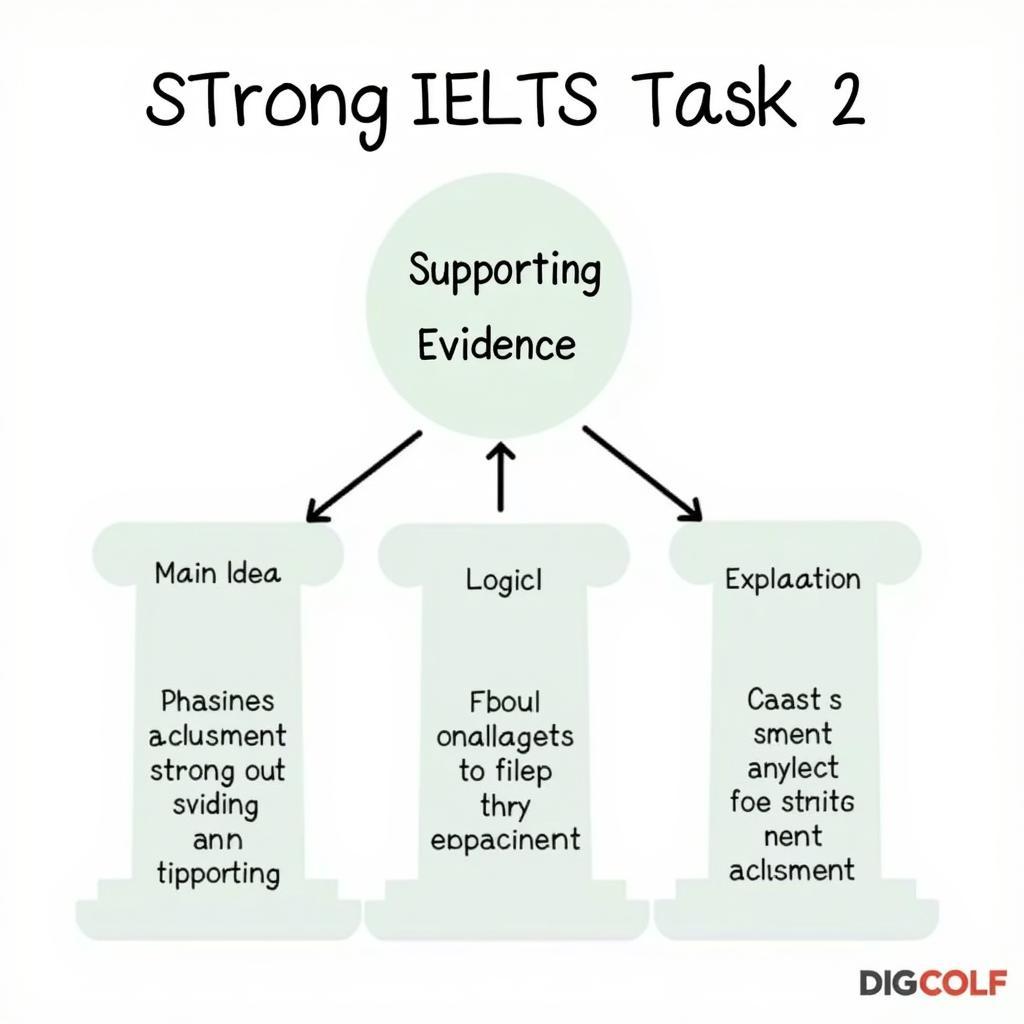When it comes to achieving a high band score in IELTS Writing Task 2, developing strong arguments is crucial. This comprehensive guide will help you construct compelling arguments that demonstrate critical thinking and persuasive writing skills, essential for how to write high-scoring task 2 essays.
Understanding the Foundation of Strong Arguments
The Three-Pillar Approach
Every effective Task 2 argument should be built on three essential pillars:
- Clear main idea
- Relevant supporting evidence
- Logical explanation

Developing Your Main Ideas
To create powerful arguments, you must first generate clear and focused main ideas. When using specific examples in task 2, consider these strategies:
- Brainstorming effectively
- Analyzing the question thoroughly
- Identifying key themes
- Creating clear topic sentences
Dr. Sarah Thompson, IELTS examiner with 15 years of experience, notes: “The strongest arguments always begin with a crystal-clear main idea that directly addresses the task question.”
Supporting Your Arguments
Evidence Types
Consider these various forms of evidence to strengthen your arguments:
- Statistical data
- Real-world examples
- Expert opinions
- Personal experiences
- Historical events
Connecting Ideas Logically
For those wondering how to increase IELTS writing task 2 word count, focus on developing logical connections between your ideas. Use:
- Transition signals
- Cause and effect relationships
- Compare and contrast structures
- Problem-solution patterns
Advanced Argument Development Techniques
The PEEL Method
- Point: State your main argument
- Evidence: Provide supporting evidence
- Explain: Analyze the evidence
- Link: Connect back to the main topic
Professor James Miller, IELTS Writing specialist, emphasizes: “The PEEL method ensures your arguments maintain coherence and demonstrate deep analytical thinking.”
Handling Different Essay Types
Different essay types require specific argument structures. For example, when working with strategies for task 2 advantage-disadvantage essays, balance is key.
Essay-Specific Argument Patterns
- Opinion Essays: Clear stance + supporting arguments
- Discussion Essays: Balanced exploration + personal view
- Problem-Solution: Clear problem analysis + feasible solutions
- Advantage-Disadvantage: Equal consideration of both aspects
Common Pitfalls to Avoid
When developing arguments, avoid these common mistakes:
- Unsupported claims
- Overgeneralization
- Emotional language
- Irrelevant examples
- Circular reasoning
Strengthening Your Introduction
A strong introduction sets the tone for your arguments. Learn IELTS Writing Task 2 introduction tips to start your essay effectively.
Key Elements of a Strong Introduction
- Clear topic presentation
- Relevant background information
- Focused thesis statement
- Essay outline preview
Practice Exercises for Argument Development
-
Analysis Exercise
- Identify argument components in sample essays
- Evaluate evidence effectiveness
- Assess logical connections
-
Structure Practice
- Create argument outlines
- Develop supporting evidence
- Write linking sentences
Conclusion
Developing strong Task 2 arguments requires careful planning, clear thinking, and consistent practice. Focus on creating well-supported, logically connected arguments that directly address the task question. Remember to maintain balance, use relevant evidence, and demonstrate critical analysis throughout your essay.
Frequently Asked Questions
- How many arguments should I include in my Task 2 essay?
- What makes a convincing piece of evidence?
- How can I improve the logical flow of my arguments?
- Should I use personal examples in my arguments?
- How do I ensure my arguments are relevant to the task?